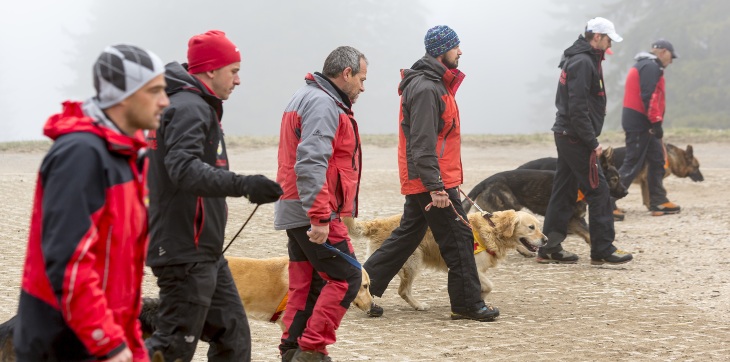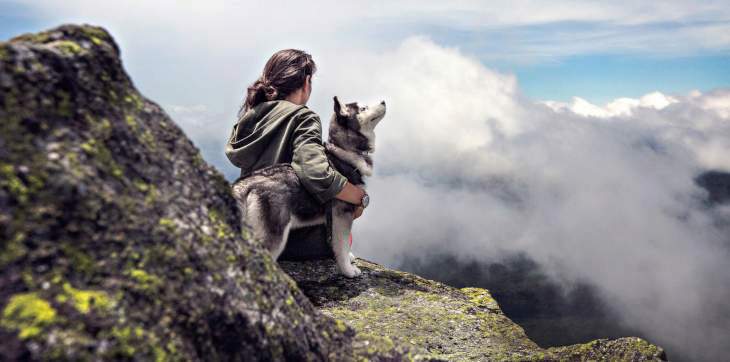All About Search and Rescue Dogs: What SAR Dogs Do
Search and rescue dogs, also known as SAR dogs, are a type of working dog. They use their extraordinary scenting abilities and work side by side with human handlers to locate missing people in wilderness areas, disaster zones, and other emergency situations. These highly trained dogs save time—and lives—by following scents that humans can’t detect.
What is a Search and Rescue Dog?
A search and rescue dog is specially trained to detect human scent and guide their handler toward the source. There are two primary specialties: airscent and tracking. Airscent dogs detect scents carried by the wind or air currents, while tracking dogs follow a specific person’s scent trail along the ground.
Airscent Dogs
Airscent dogs are ideal for locating a missing person in a large wilderness area, like a national park, because they don’t need to follow a trail. Instead, they track scent in the air, moving in the direction where it smells strongest until they reach the source.
There are several types of airscent dogs trained in additional specialties, including:
- Rubble dogs to find people trapped in collapsed buildings after disasters.
- Avalanche dogs or mountain rescue dogs to locate people buried under snow or lost in snowstorms.
- Cadaver dogs (on land or in water) to locate human remains.
Tracking Dogs
Tracking dogs are most effective shortly after a person disappears. Using scent from a last-known location, they can follow an individual’s exact path for miles. If a child goes missing from a playground or a hiker wanders off a trail, for example, a trained tracking dog can trail their unique scent to help rescuers reach them more quickly.

Best Dog Breeds and Skills for SAR Work
In addition to an excellent sense of smell, search and rescue dogs need endurance, intelligence, adaptability, and trainability to succeed at their jobs. Many hound dog breeds, particularly scenthounds, and sporting dog breeds were historically bred for tracking and retrieving game during hunts, making them natural candidates for SAR dogs.
Common search and rescue dog breeds include:
- Australian Shepherd
- Basset Hound
- Beagle
- Belgian Malinois
- Bloodhound
- Coonhound
- German Shepherd
- Golden Retriever
- Labrador Retriever
- Newfoundland
- Rottweiler
- Saint Bernard
These canines tend to excel as SAR dog breeds thanks to their stamina, focus, and eagerness to work with humans. However, any dog with the right temperament and drive can be trained as an SAR dog.
Search and Rescue Dog Training at Home
Want to give your dog a whiff of canine search and rescue? Simple nose work games at home are a fun way to explore your dog’s own scenting instincts.
Start with a simple scent game. Hide a favorite natural chew somewhere in your home or yard, then let your dog use their nose to find it. They’ll be immediately rewarded when they find it, supporting their training and building scenting confidence.
You can also engage in more formal scent training. Introduce your dog to a specific scent, like an essential oil, then train them to locate a box containing that scent. Be sure to keep high-value treats on hand to reward your dog when they succeed!
🐶 Related: Scent Training for Dogs: Steps, Tips, & Benefits
SAR Organizations and Search and Rescue Classes for Dogs
Many areas across the country have local canine search and rescue organizations made up of volunteers. These groups often offer their own search and rescue classes for dogs, mentorship, and guidance on obtaining search and rescue certification for you and your dog.

If you are interested in training your furry friend as a search and rescue dog, contact your local organization to learn more about their requirements. National groups like the National Association for Search and Rescue (NASAR) and the American Rescue Dog Association (ARDA) can provide information and resources.
Follow Your Nose!
Search and rescue dogs remind us just how powerful a dog’s nose can be. Engaging your own Cadet in scent training at home is a great way to provide mental enrichment and connect them to their natural instincts. Plus, it can be a powerful first step for SAR dog training at home!
Learn about other working dogs that use their extraordinary skills to help humans:
- 5 Less Common, Impressive Service Dog Breeds
- 9 Amazing Police Dog Breeds (And What They Do)
- 8 Sled Dog Breeds and Their Fascinating History
FAQs About Search and Rescue Dogs
What is a search and rescue dog?
A search and rescue dog is trained to detect human scent and guide handlers to missing or trapped individuals.
What’s the difference between airscent and tracking dogs?
Airscent dogs detect airborne scent over large areas, while tracking dogs follow one person’s specific trail from their last known location.
What breeds make good SAR dogs?
Breeds with stamina, scenting ability, and trainability, including Labrador Retrievers, Bloodhounds, and German Shepherds, are common search and rescue dogs, but almost any dog with the right temperament can succeed with SAR training.
What rewards work best for scent training?
High-value treats and long-lasting chews are ideal to keep dogs motivated and help them decompress after training.






